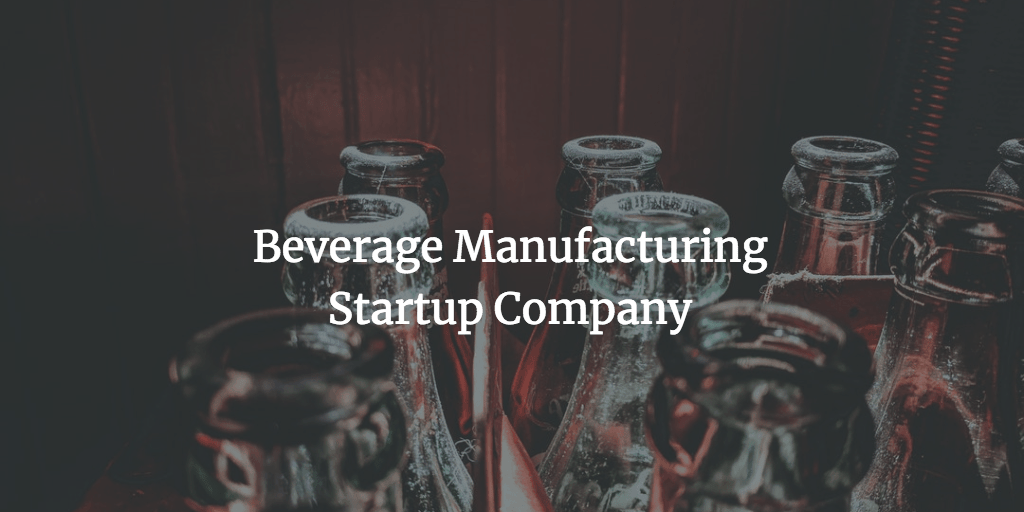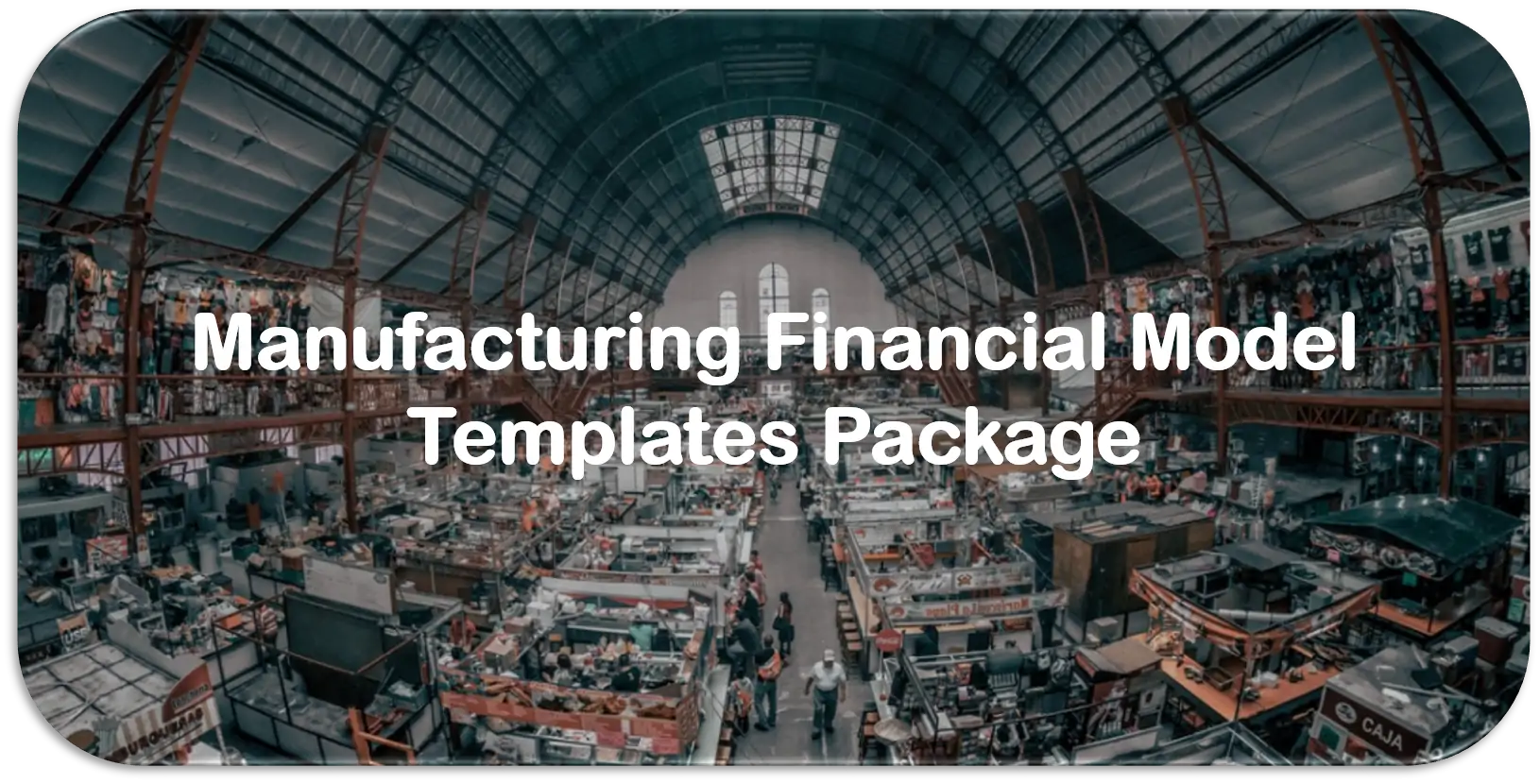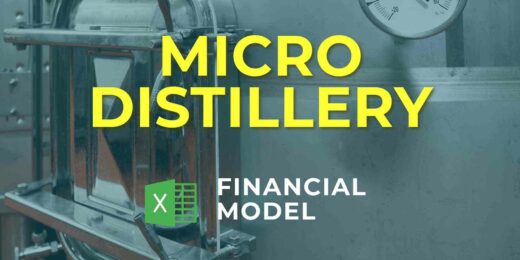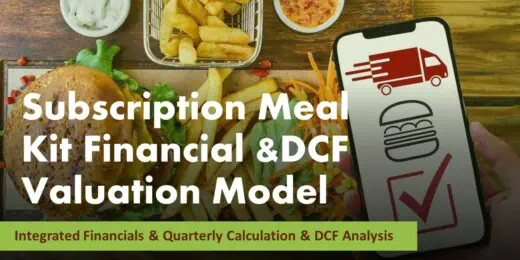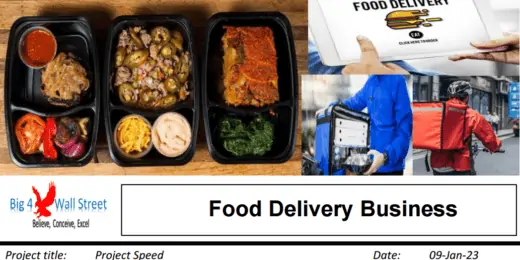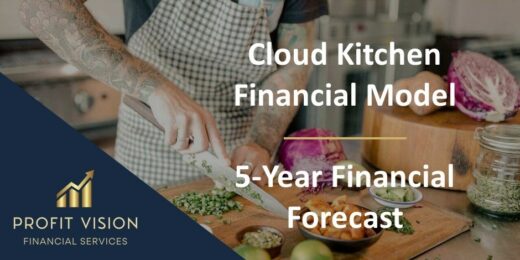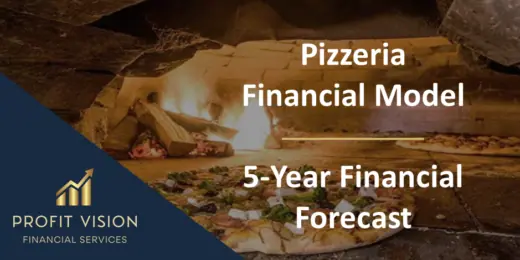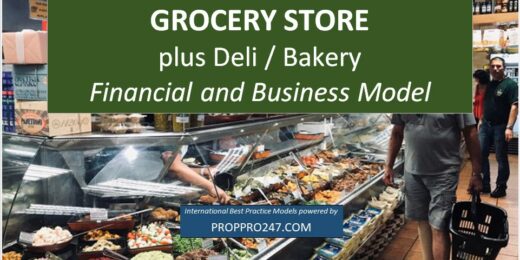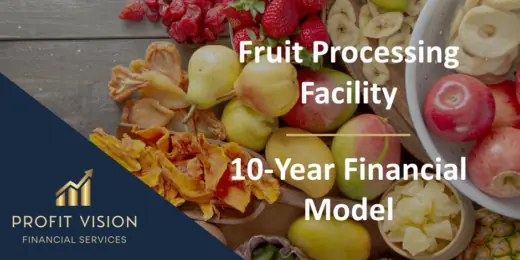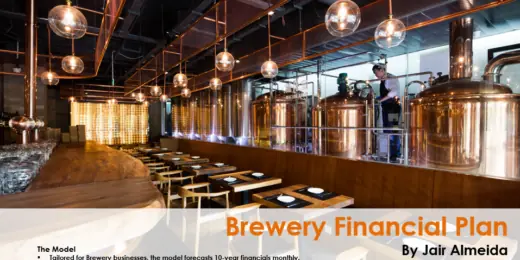A Comprehensive Guide to Excelling in Fixed Cost of a Coffee Shop

Mastering the fixed costs of a coffee shop is crucial for maintaining profitability and ensuring business sustainability. Detailed management and optimization strategies can significantly enhance financial performance.
Opening a coffee shop presents a dream for many, but it requires meticulous financial planning. A significant element to consider is the fixed costs, which remain constant regardless of sales volume. These expenses, including rent, utilities, salaries for permanent staff, and loan payments, are the foundation of your budgeting efforts.
Precise understanding and management of these costs are vital for any coffee shop’s success. It not only aids in setting realistic pricing strategies but also helps in stabilizing your business during fluctuating market demands. A well-rounded introduction to fixed costs will pave the way for effective resource allocation, ultimately contributing to the coffee shop’s long-term growth and consistency in the competitive market.
The Essence Of Fixed Costs In Coffee Shop Operations
The Essence of Fixed Costs in Coffee Shop Operations is crucial for any coffee shop owner. Solid understanding and effective management can lead to success. Let’s unlock the mystery of fixed costs and their impact.
Distinguishing Fixed Costs From Variable Expenses
Knowing the difference between fixed costs and variable expenses is the first step. Fixed costs stay the same every month. Variable expenses change with sales volume.
| Fixed Costs | Variable Expenses |
|---|---|
| Rent | Coffee beans |
| Salaries | Take-away cups |
| Utilities | Milk |
Central Role In Pricing And Profit Margins
Fixed costs shape pricing strategies. They ensure coverage of all expenses. Profit margins improve as sales increase over fixed costs.
- Set prices that cover fixed costs.
- Understand breakeven point.
- Aim for sales growth.
Initial Fixed Costs: Setting Up Your Coffee Haven
Starting a coffee shop is exciting. But before the aroma of fresh coffee fills the air, initial fixed costs need your attention. Smart budgeting here sets the foundation for success. Grasp these costs to turn your coffee dream into reality.
Navigating Real Estate And Rental Fees
Choosing the right location is pivotal. It can make or break your coffee shop. Let’s guide you through this:
| Location Factor | Cost Implication |
|---|---|
| High Foot Traffic Areas | Higher rent but more customers |
| Size of Space | Larger space, more rent |
| Lease Duration | Longer leases can offer stability but check escape clauses |
Consult with real estate agents and negotiate terms that favor your business plan.
Essential Coffee Shop Equipment And Furnishings
Your coffee shop’s heart lies in its equipment and furnishings. Ensure you have everything needed:
- Espresso machine – This is a must-have.
- Grinders – For the freshest coffee.
- Refrigeration – To keep milk and pastries chilled.
- Seating – Comfortable chairs and tables invite customers to stay.
- Counters – For efficient service and display.
- Decor – Create a welcoming atmosphere.
Research suppliers and compare prices. Look into leasing options for expensive equipment to reduce upfront costs.
Recurring Monthly Overheads To Keep The Espresso Flowing
Running a coffee shop is like crafting the perfect cup of coffee. Every sip of success, just like every espresso shot, depends on a balanced blend of ingredients. For a coffee shop, these ingredients are the recurring monthly costs essential to smooth operation. So, let’s steam through the two main expenses: utility bills and staff salaries.
Utility Bills: Water, Electricity, And Internet
Utility bills fuel the day-to-day activities of a coffee shop. The warmth of your welcome relies not just on the smiles but also on the lights, the brew, and the buzz of online reviews. Therefore, keeping utility costs in check is crucial.
Here are key utilities:
- Water: A vital resource for making coffee and running a cafe.
- Electricity: Powers machines and lights up the space.
- Internet: Keeps your POS system and Wi-Fi service active.
Control these expenses by:
- Installing energy-efficient appliances.
- Using water-saving devices.
- Choosing internet plans that match business needs.
Staff Salaries: Baristas And Support Staff Wages
Staff salaries represent a substantial slice of the monthly expenditure pie. Your team’s wages aren’t just a cost; they’re an investment in quality service and customer satisfaction.
Consider these facts:
- Baristas not only serve but also represent your brand.
- Support staff ensure a clean and welcoming environment.
To manage wages effectively, businesses must:
- Set competitive yet sustainable salary structures.
- Offer training to boost efficiency and customer service.
Remember, a fair wage policy turns employees into advocates for your coffee shop.
Keep track of these costs monthly to serve up success!
Licenses And Insurance: Brewing With Peace Of Mind
Opening a coffee shop brings excitement and challenges. To serve coffee with confidence, shop owners must address legal essentials. Licenses and insurance form the backbone of any coffee shop’s compliance and protection strategy. This guide highlights the importance of understanding regulatory costs and choosing the right insurance policies.
Understanding Regulatory Costs
Before pouring the first cup, coffee shop owners should navigate the complexities of licenses. Each region has specific requirements dictating how businesses operate. Some of the common licenses include:
- Business License: A basic permit to legally operate a coffee shop.
- Health Department Permit: Required to ensure food safety standards are met.
- Sign Permit: Necessary if the shop displays signage.
- Building Permit: Needed for renovations or new construction.
License fees vary based on location and scope. Starting with accurate information from local government websites is crucial.
Choosing The Right Insurance Policies
Insurance protects the coffee shop from unexpected events. Different policies offer various levels of protection. Key insurance types include:
| Insurance Type | Coverage | Benefit |
|---|---|---|
| General Liability | Accidents, injuries, property damage | Shields against common risks |
| Property Insurance | Equipment, inventory loss | Secures physical assets |
| Workers’ Compensation | Employee injury, illness | Safeguards employees and business |
Coffee shop owners should consult with insurance brokers to tailor policies to their specific needs. Understanding coverage limits and exclusions is critical. Investing in the right insurance policies means brewing with peace of mind.
Tackling Leasehold Or Mortgage Costs
Understanding and controlling the fixed costs of running a coffee shop is key to success. One of the heaviest expenses is often the cost of the space itself, be it a lease or a mortgage. Getting a handle on these costs can significantly impact your business’s bottom line. Let’s delve into effective strategies for managing these expenses.
Strategies For Negotiating Favorable Terms
Entering leasehold or mortgage agreements can be daunting. Thorough preparation is your best tool. Here are several strategies to secure terms that align with your financial goals:
- Research local market rates to benchmark costs.
- Aside from rent, ask for concessions like a fit-out contribution.
- Consider lengthier terms for lower monthly payments.
- Negotiate periodic rent reviews to avoid unexpected hikes.
Remember, presenting a solid business plan can make you a more attractive tenant to landlords, granting you leverage in negotiations.
Implications For Long-term Financial Stability
Addressing leasehold or mortgage costs is not just about immediate savings. It’s about ensuring long-term sustainability. A smartly negotiated lease or mortgage can:
| Benefit | Details |
|---|---|
| Improved Cash Flow | Favorable terms free up capital for other business areas. |
| Forecast Accuracy | Predictable costs help in precise financial planning. |
| Risk Mitigation | Long-term agreements protect against market volatility. |
A solid agreement provides a stable foundation for your coffee shop. It paves the way for focused investments in quality, customer experience, and growth.
Maintaining Equipment: A Stitch In Time Saves Nine
Proper maintenance of your coffee shop equipment is essential. It’s the beating heart of your business. Delayed or ignored issues can lead to bigger problems. These can hurt your wallet and your service quality.
Regular Servicing Of Coffee Machines
Regular servicing is a must to keep coffee machines performing at their best. Think of it as a health check for your machines. It spots issues before they become emergencies. Here’s what regular servicing should include:
- Inspecting for wear and tear
- Cleaning internal components
- Replacing worn-out parts
- Updating software, if applicable
Stick to a servicing schedule based on the manufacturer’s guidelines. Check the water quality too. Good water makes better coffee and is gentler on your machines.
Allocating Budget For Repairs And Upgrades
Set aside money for unexpected repairs and upgrades. This ensures your coffee shop never misses a beat. Here’s a simple plan to manage funds:
- Determine the lifespan of your primary equipment.
- Estimate the cost of repairs or a full replacement.
- Break down that cost into monthly savings.
Remember, technology evolves. Keeping up with the latest upgrades can set you apart. Plan your budget to allow for gradual improvements. This keeps your coffee shop competitive and efficient.
Marketing And Branding: Attracting A Steady Stream Of Coffee Lovers
Catching the eye of coffee enthusiasts requires a strong marketing and branding strategy. A coffee shop’s success ties into how well it presents itself to the public. Engage with potential customers where they spend most of their time: online and in the community. Effective marketing and smart branding can transform a steady trickle of customers into a flowing stream of regulars.
Investing In Digital Marketing
Digital marketing is the beacon that guides coffee lovers to your doorstep. Investing in this area covers:
- SEO: Helps people find your shop when they type “best coffee near me” into search engines.
- Social Media: Creates a vibrant, engaging presence that can attract followers and turn them into customers.
- Email Campaigns: Keeps your shop on customers’ minds with updates and special offers.
Remember, online ads grab attention quickly. It’s essential to allocate a portion of your budget for various digital platforms.
The Costs Of Loyalty Programs And Branding Materials
Loyalty programs and branding materials are crucial for customer retention and shop identity. Consider these expenses:
- Loyalty Cards: Reward repeat customers to keep them coming back.
- Merchandise: Sells your brand and satisfies customer love for good design.
- Signage and Packaging: First impressions matter. Make sure yours counts.
Quality branding extends past your logo. It encompasses every aspect of the customer experience.
Mastering The Financial Management Of Fixed Costs
Financial stability is the backbone of any thriving coffee shop. Understanding and managing fixed costs becomes vital. These are expenses that do not change with sales volume. They include rent, utilities, and insurance. Mastering this aspect ensures a streamlined budget and better financial health.
Budgeting Techniques For Steady Growth
Proper budgeting protects against financial surprises. Start by listing all fixed costs. This creates a baseline for your financial plan. Adopt the following techniques:
- Zero-based budgeting: Justify each expense, start from zero every period.
- Envelope system: Allocate cash to envelopes for each expense category.
- Forecasting: Use past data to anticipate future fixed costs.
Update your budget regularly. Track changes in costs and adjust accordingly.
Cost-benefit Analysis For Investment Decisions
Smart investment decisions are crucial. Conduct a cost-benefit analysis to evaluate potential investments:
- List benefits and costs of the investment.
- Estimate the monetary value of each.
- Compare to see if benefits outweigh costs.
Seek investments that reduce fixed costs in the long term. Examples include energy-efficient machines or buying equipment over leasing.
Adapting To Seasonal Variations And Economic Changes
Adapting to seasonal variations and economic changes is crucial for coffee shop owners. Staying agile allows you to excel despite the constant ebb and flow of sales. Understanding these patterns equips you with the knowledge to prepare for the unpredictable nature of business.
Coping With Fluctuating Sales
When sales peak during busy seasons, your coffee shop flourishes. Strategic staffing and inventory control can maximize profits. During slower periods, creativity in marketing and customer engagement maintain a steady flow of patrons.
- Adjust staff schedules to match customer traffic.
- Introduce seasonal drinks to attract interest.
- Launch promotions around holidays and local events.
Managing Fixed Costs During Downturns
Economic downturns pose challenges. Yet, smart management of fixed costs ensures your coffee shop remains on firm ground.
| Cost Category | Action Plan |
|---|---|
| Rent | Negotiate flexible lease terms or share space. |
| Utilities | Implement energy-saving practices. |
| Wages | Optimize shift patterns to align with demand. |
Review your expenses and identify areas for cost-cutting. Sometimes, small changes lead to significant savings.
Tales From The Trenches: Success Stories And Cautionary Tales
Embarking on the journey of operating a coffee shop comes with its fair share of trials and triumphs. Discovering the formula to managing your fixed costs effectively can be as elusive as the perfect espresso blend. This guide dives deep into real-life scenarios, spotlighting the wins and warning against the missteps in controlling fixed costs. Let’s explore the resilient strategies and costly errors to help your coffee shop brew up success and steer clear of financial pitfalls.
Case Studies Of Thriving Coffee Establishments
Learning from those who’ve mastered their craft provides invaluable insights. The following case studies highlight how savvy coffee shop owners have optimized their fixed costs to pave the way for profitability and growth:
| Name | Strategy | Outcome |
|---|---|---|
| Bean There, Done That | Negotiated long-term lease | Reduced monthly expenses |
| The Steaming Cup | Invested in energy-efficient equipment | Lowered utility bills |
| Cafe Cognizant | Used bulk purchasing | Minimized supply costs |
These stories stand as testaments to strategic planning and the promising results it can yield.
Mistakes To Avoid In Managing Fixed Costs
Averting common financial blunders is just as critical as emulating the successes. Below are some key missteps to sidestep:
- Ignoring market research potentially leads to overspending on rent in high-priced areas.
- Skimping on equipment quality may result in higher maintenance costs.
- Omitting a contingency fund can leave a business vulnerable to unforeseen circumstances.
Bearing these cautions in mind, coffee shop operators can avoid costly errors that sabotage their business’s stability.
Frequently Asked Questions
What Are Fixed Costs In A Coffee Shop?
Fixed costs refer to expenses that stay the same regardless of sales volume. For coffee shops, these costs include rent, utilities, equipment leases, and salaried wages. Controlling these can help maintain profitability.
How To Calculate A Coffee Shop’s Fixed Costs?
To calculate fixed costs, add up all consistent expenses that don’t change with sales figures. These include monthly rent, loan payments, insurance, and license fees. Total these for an accurate picture of fixed expenditures.
What Percentage Of Revenue Should Cover Fixed Costs?
Ideally, fixed costs should not surpass 30-35% of a coffee shop’s revenue. Keeping fixed costs within this range can ensure there are sufficient margins for variable costs and profit generation.
Can Fixed Costs Change Over Time In Coffee Shops?
While fixed costs are consistent, they can change over time. Lease renewals or equipment upgrades can alter these expenses. Owners should review these costs annually or during business changes to stay informed and adapt budgets.
Conclusion
Understanding the fixed costs in your coffee shop is crucial for financial success. By mastering these expenditures, you can streamline operations and boost profitability. Stay proactive, adjust when necessary, and watch your coffee haven thrive. Remember, sound financial planning is the espresso shot to your coffee shop’s success!


